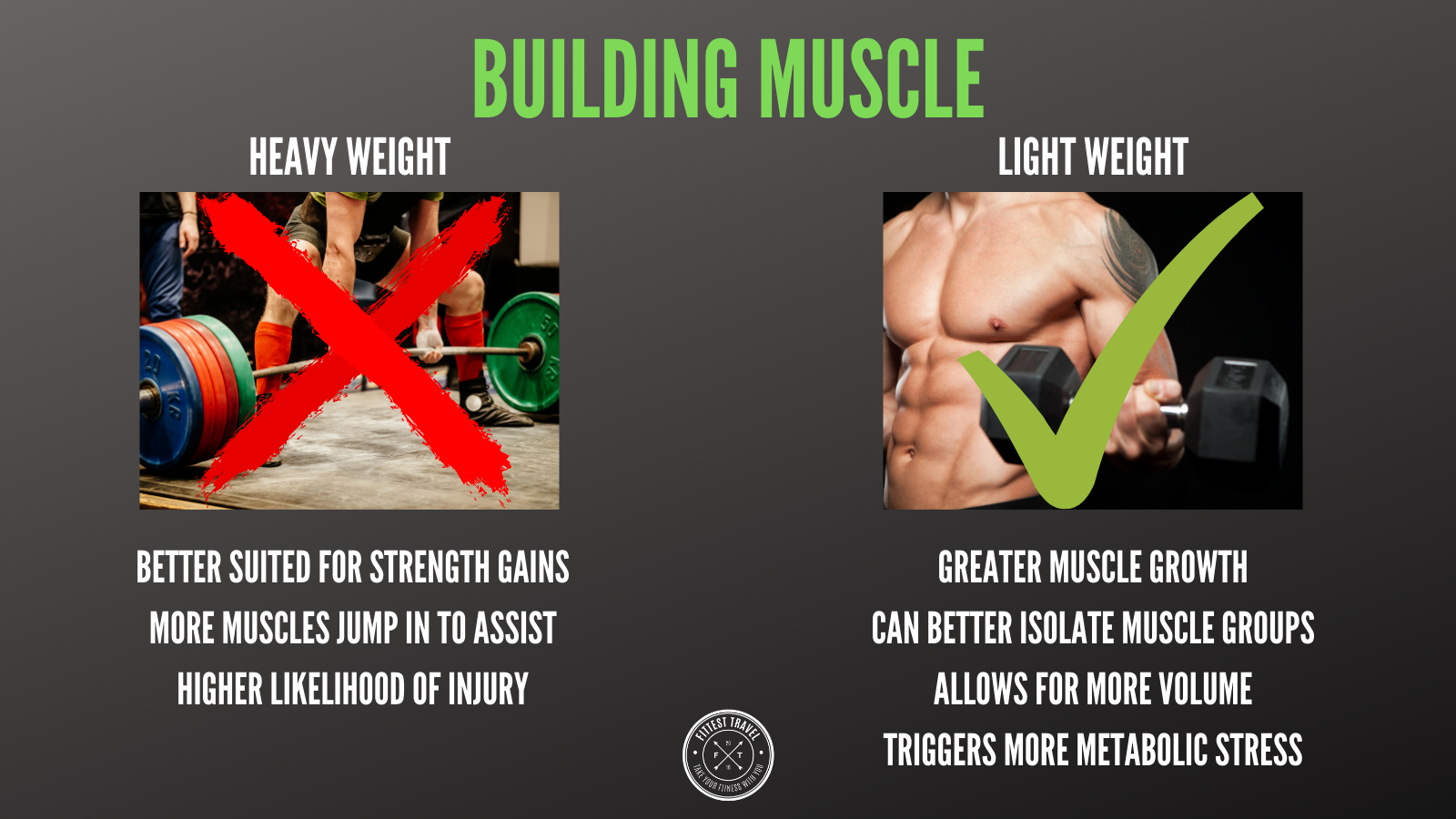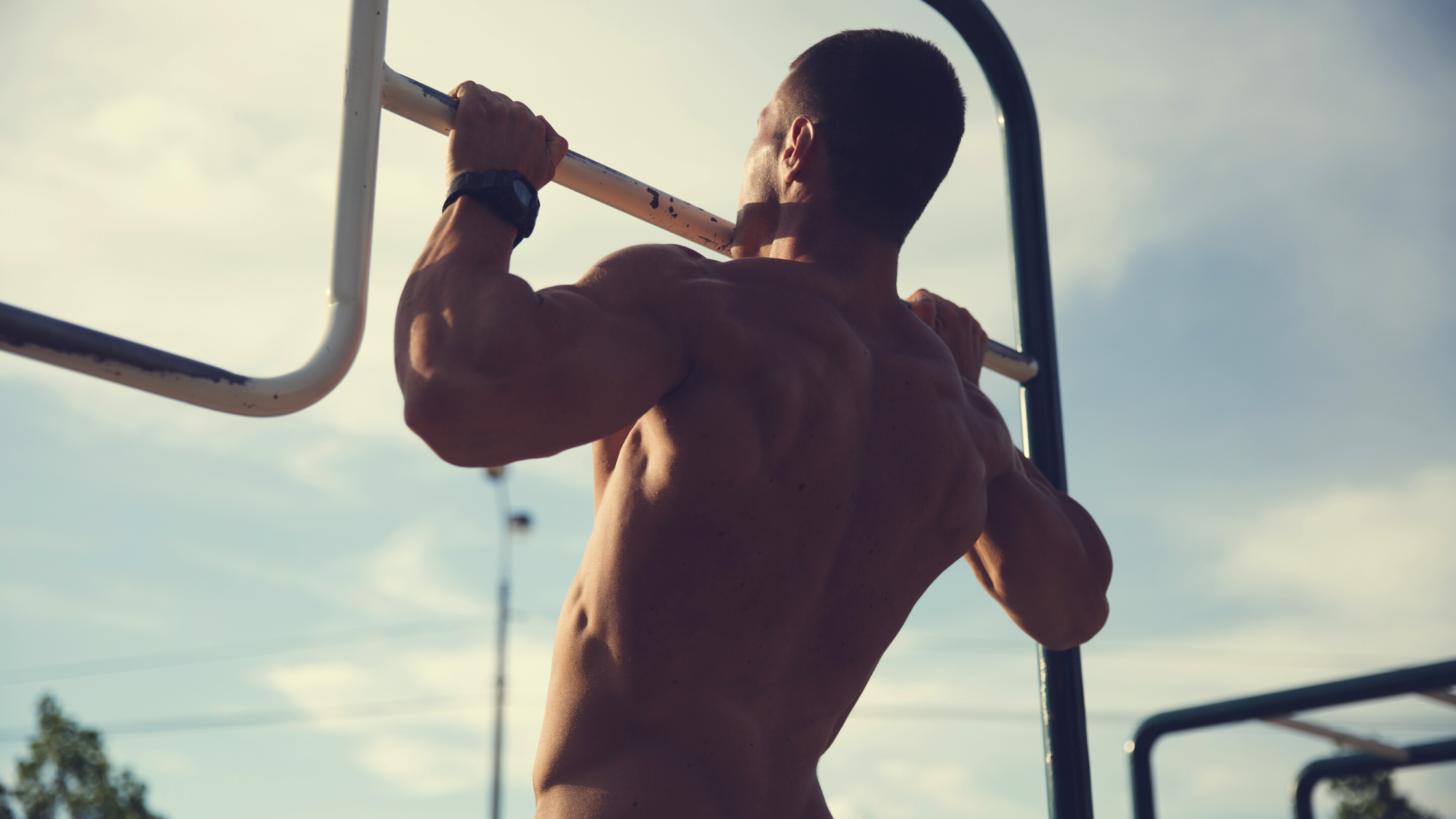Light Weights vs Heavy Weights to Build Muscle
Building muscle isn’t as simple as lifting the heaviest thing you can.
When I started lifting weights years ago, the training philosophy for most lifters was to lift heavy weights at low reps for bulking and lighter weights at higher reps for cutting.
I didn’t know any better, so I followed the crowd. And yeah, I made some progress.
But it wasn’t until years later when I tweaked my approach to training that I saw real gains. And that meant a few things.
The keys to building muscle:
Check your ego at the gym door and stop trying to impress people with how much weight you think you can lift.
Isolate a specific muscle group by stopping other muscle groups from jumping into the movement.
Add volume by doing more reps and sets.
Focus on the mind-muscle connection and feel the targeted muscle working during a movement.
Slow down the tempo. Lift slower and lower slower. Keep the muscle under tension for longer.
So with all that said, you might be sensing a theme. Each one of those five points means you’re going to be lifting lighter weights.
Let’s dive into why that’s what works better.
Heavy Weights for Building Muscle
As I mentioned, the old adage for building muscle meant lifting a weight that you could handle for anywhere from one to ten reps.
Strength training usually meant three to five reps and muscle growth fell into the eight to ten rep range.
The problem with training this way for muscle growth is that our muscles are extremely adaptive and the volume is not high enough to stress them to the point of significant hypertrophy. Plus, we can’t isolate them enough.
Now, if you’re trying to get stronger, this will get you there. But as I found out, I got stronger without looking like I was actually strong. My lift numbers went up but my muscles weren’t really growing.
Addressing muscle imbalances, such as those covered in webinars like 'Muscle Imbalances Revealed,' can be crucial for achieving not only strength but also a well-proportioned and aesthetically pleasing physique.
Being strong is great but I want to look strong and I suspect you do too.
Light Weights for Building Muscle
It’s relative when I say “lightweights.” What’s light for me may not be light for you and vice versa.
But, for the purposes of what we’re talking about here, let’s consider “lightweights” to be an amount less than what you would typically lift for ten reps.
Lightweights are what you can lift with good form for fifteen reps. On the fifteenth rep, you should feel a heavy constriction in the muscle you’re targeting and be close to failure.
Let’s say you could do a few more. You’re last few reps should be painful and ugly. That’s what we’re looking for.
Using lighter weights will allow us to stop other muscle groups from jumping in to assist in the lift, therefore further isolating the muscle group we’re targeting.
It’s going to allow you to add more volume, by doing more reps (15-20) and more sets (4-5). The rep range makes a huge difference.
We can also slow down the tempo by lifting and lowering slower and feeling the connection with the muscle group performing the movement.
For example, let’s look at the dumbbell bicep curl.
Most people grab some heavy dumbbells, rest their arms at their sides, and jerk the weight up and down ten times.
While their biceps do some of the work, much of the movement is getting transferred to their shoulders and traps. Momentum is also picking up a lot of the slack.
And, on top of all that, they’re performing a full range of motion, which is giving the muscle an opportunity to rest in the middle of each rep. This is the opposite of what we want when trying to build muscle.
Here’s a way to tweak the dumbbell bicep curl for far greater results.
Grab lighter dumbbells.
Put your biceps at a mechanical disadvantage by pushing your elbows forward and holding the dumbbells supinated with your forearms parallel to the floor.
Slowly curl each dumbbell up three-quarters of the way.
Stop and slowly lower them back down only until your forearms are parallel with the floor again. That’s one rep. Do that fourteen to nineteen more times.
I guarantee you’ll feel this in your biceps way more than you would with a “normal” bicep curl.
These small changes can be made to any lift. Don’t lock your squats and presses out at the top.
Perform movements seated that you would normally do standing and take the lower half of your body out of the equation.
The Verdict
Lighter weights are hands down the way to go for pure muscle growth.
The lighter weight allows you to incorporate the changes we outlined and will lead to more tension on the muscle you’re targeting.
This doesn’t mean lifting heavy has no place in your training.
Heavyweights mean greater mechanical tension and will undoubtedly make you stronger. But if your focus is on muscle growth, your accessory movements should be with lighter weight.
This doesn’t mean grabbing weight so light that the lift becomes easy. It simply means to dial back the amount of weight, subtracting around 25% from your 10 rep max.
So, if you normally front squat 225 pounds ten times, drop the weight to around 175. Do 15-20 reps, go only three-quarters of the way up, and slow down your tempo.
This will yield greater muscle growth.
The pump you experience will be better as your body rushes blood to muscles under greater stress from the focused tension. Standby for gains.
Still not convinced that lighter weights will give you better muscle growth? Watch this video by Ryan Humiston.
Train our dumbbell-only training series to use the principles we outlined in this article for great muscle growth.









